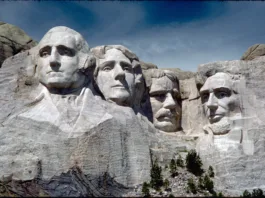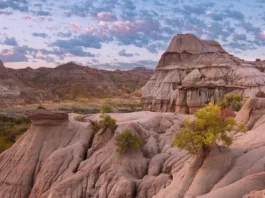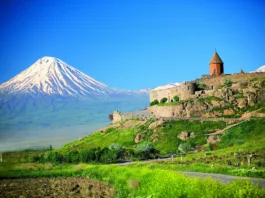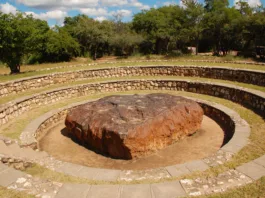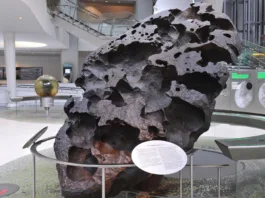Al-Ula is a historic and culturally significant city located in the northwestern region of Saudi Arabia. It is part of the Al Madinah Province and covers an area of approximately 25,000 square kilometers. The city is nestled in a desert valley surrounded by towering sandstone mountains, offering a breathtaking natural setting.




The history of Al-Ula dates back thousands of years, with evidence of human habitation found in the area from prehistoric times. The region has been home to various civilizations, including the Nabataeans, Lihyanites, Romans, and Islamic empires, who all left their marks on the city through their architecture, art, and cultural practices.
One of the most iconic archaeological sites in Al-Ula is Madain Saleh, also known as Al-Hijr. This UNESCO World Heritage site is renowned for its well-preserved rock-cut tombs, reminiscent of the famous Petra in Jordan. The tombs showcase the architectural brilliance of the Nabataeans, who carved them into the sandstone cliffs.
Al-Ula is also home to other archaeological sites such as Dadan, an ancient city that was the capital of the Lihyanite Kingdom. Dadan features ancient temples, tombs, and remnants of an extensive city wall, providing valuable insights into the region’s historical and cultural past.
In recent years, Al-Ula has undergone significant development efforts to promote tourism and cultural preservation. The Saudi Arabian government has invested in infrastructure improvements, visitor facilities, and the restoration of archaeological sites. These efforts have positioned Al-Ula as a major cultural and tourist destination, attracting visitors from around the world.
The stunning natural landscapes of Al-Ula add to its allure. The sandstone formations, deep canyons, and oases create a captivating contrast against the arid desert surroundings. The region’s geological features, shaped by millions of years of erosion and tectonic activity, contribute to the scenic beauty and uniqueness of Al-Ula.
Al-Ula hosts various cultural events and festivals, including the Winter at Tantora festival, which celebrates the region’s heritage through music, art, and other cultural activities. The festival brings together renowned performers and artists from around the globe, offering a vibrant cultural experience against the backdrop of Al-Ula’s historic sites.
As Al-Ula continues to grow as a tourist destination, efforts are being made to strike a balance between development and preservation, ensuring the protection of its archaeological treasures and natural landscapes. The city’s rich history, architectural wonders, and breathtaking scenery make Al-Ula a captivating destination for those seeking to explore Saudi Arabia’s cultural and natural heritage.
Geological History of Al-Ula
Formation of the Arabian Peninsula: The geological history of Al-Ula is closely tied to the formation of the Arabian Peninsula. The Arabian Peninsula is part of the larger Arabian Plate, a tectonic plate that formed through a series of geological processes over millions of years.
The formation of the Arabian Peninsula began during the breakup of the supercontinent Pangaea in the Mesozoic Era, specifically during the Jurassic and Cretaceous periods. The region was part of the Tethys Sea, an ancient ocean that separated the supercontinents Laurasia and Gondwana.
During this period, sedimentary rocks were deposited in the Tethys Sea, including the Al-Ula Sandstone Formation that characterizes the landscape of Al-Ula today. These sedimentary rocks were formed from the accumulation of sand, silt, and clay particles, as well as the remains of marine organisms.
Tectonic history and plate movements in the region: The tectonic history of the region has been influenced by the collision and interaction of several tectonic plates. The Arabian Plate is bordered by the African Plate to the west and the Eurasian Plate to the north.
The collision between the Arabian Plate and the Eurasian Plate resulted in the formation of the Zagros Mountains in Iran and the Taurus Mountains in Turkey. This tectonic activity led to the uplift and deformation of the Arabian Plate, including the formation of mountain ranges and the creation of geological structures.
In the case of Al-Ula, the region is situated on the Arabian Shield, a Precambrian geological formation that forms the core of the Arabian Peninsula. The Arabian Shield consists of ancient crystalline rocks, such as granites and metamorphic rocks, which were formed during volcanic and mountain-building events in the Precambrian period.
Sedimentary processes and deposition in Al-Ula: The sedimentary rocks of Al-Ula, particularly the Al-Ula Sandstone Formation, provide evidence of the deposition and geological processes that occurred in the region.
During the Jurassic and Cretaceous periods, the Tethys Sea experienced extensive sedimentation. Rivers transported sediments from the surrounding land areas, including eroded rocks and organic matter, which were deposited in the sea.
Over time, these sediments were compacted and cemented, transforming them into the sandstone that we see today in Al-Ula. The layers of sandstone formed in horizontal beds, known as strata, with distinct patterns and textures.
The erosion and weathering of the sandstone have played a significant role in shaping the unique landscapes of Al-Ula. The arid climate, occasional flash floods, and wind erosion have sculpted deep canyons, carved rock formations, and created intricate patterns on the sandstone surfaces.
The sedimentary rocks of Al-Ula also preserve a record of ancient environments and past climates. Fossilized remains of marine organisms, such as shells and coral reefs, can be found in some sedimentary layers, providing insights into the ancient marine ecosystems that existed during the deposition of these rocks.
Understanding the sedimentary processes and deposition in Al-Ula allows geologists to reconstruct the geological history of the region and gain insights into the environmental changes that have occurred over millions of years.
Overall, the geological history of Al-Ula encompasses the formation of the Arabian Peninsula, tectonic events and plate movements, and the deposition of sedimentary rocks through various processes. These geological processes have shaped the landscapes and provided valuable insights into the region’s ancient environments and natural history.
Rock Types and Formations
Al-Ula in Saudi Arabia showcases a diverse range of rock types and formations, each with its own geological significance. Here are some of the notable rock types and formations found in the region:
- Sandstone: Sandstone is one of the predominant rock types in Al-Ula. The Al-Ula Sandstone Formation, which dates back to the Jurassic and Cretaceous periods, is particularly prominent. The sandstone rocks have a distinctive reddish-brown hue and are characterized by their ability to be easily shaped by erosion, giving rise to the stunning cliffs, canyons, and rock formations in the area.
- Basalt: Basalt is a volcanic rock that is present in the form of extensive lava fields, known as the Harrat, in and around Al-Ula. These basaltic lava flows originated from volcanic eruptions that occurred between the Miocene and Holocene epochs. The black-colored basalt landscapes offer a striking contrast to the surrounding sandstone formations.
- Granite: Granite is a common intrusive igneous rock found in the Arabian Shield, the underlying geological formation of the Arabian Peninsula. It is composed mainly of quartz, feldspar, and mica minerals. Granite is recognized for its coarse-grained texture and durability. It can be seen in some areas surrounding Al-Ula, forming rugged mountains and providing a foundation for the landscape.
- Limestone: Limestone, a sedimentary rock primarily composed of calcium carbonate, is also present in parts of Al-Ula. While not as abundant as sandstone, limestone can be found in certain areas. It often contains fossils and contributes to the geological diversity of the region.
- Conglomerate: Conglomerate is a sedimentary rock made up of rounded pebbles and stones cemented together. It is occasionally encountered in Al-Ula, particularly in areas where ancient river channels or alluvial fans were present. Conglomerate formations add a unique texture and appearance to the landscape.
- Volcanic Tuff: Volcanic tuff is a type of rock formed from volcanic ash and fragments of volcanic debris that have been compacted and lithified. While not as prevalent as sandstone and basalt, volcanic tuff can be found in some areas around Al-Ula, offering insights into past volcanic activity in the region.
These various rock types and formations contribute to the captivating geological landscape of Al-Ula. They bear witness to the processes of sedimentation, volcanic activity, erosion, and tectonic events that have shaped the region over millions of years, leaving behind a visual tapestry of colors, textures, and landforms.
Structural Geology
Structural geology plays a crucial role in understanding the geological features and formations present in the region. Here are some key aspects of structural geology relevant to Al-Ula:
- Folding: Folding refers to the bending or curving of rock layers due to tectonic forces. In Al-Ula, folding has played a significant role in the formation of the sandstone cliffs, canyons, and mountains. The pressure and movement of the Earth’s crust over millions of years have caused the sandstone layers to fold, resulting in the unique structures seen in the landscape.
- Faulting: Faulting occurs when there is a fracture or break in the Earth’s crust along which movement has taken place. Faults can be classified into different types, including normal faults, reverse faults, and strike-slip faults. In Al-Ula, various fault systems have influenced the development of the region. These faults may have contributed to the formation of canyons and valleys by creating pathways for erosion and altering the landscape.
- Jointing: Joints are fractures in rocks where there has been no appreciable displacement or movement. They form as a result of the release of stress in the Earth’s crust. Joints are commonly observed in the sandstone and granite rocks of Al-Ula. They can affect the behavior of rocks by controlling their susceptibility to weathering and erosion.
- Unconformities: Unconformities are gaps or missing sections in the geological record, typically indicating a period of erosion or non-deposition. They occur when older rocks are uplifted and eroded before younger rocks are deposited on top. Unconformities can be found in Al-Ula, providing evidence of past erosional events and changes in sedimentation patterns.
By studying structural geology in Al-Ula, geologists can gain insights into the forces and processes that have shaped the region over time. It helps in understanding the tectonic history, the formation of geological structures, and the geological evolution of the area. This knowledge is valuable not only for academic purposes but also for practical applications such as resource exploration, geological hazard assessment, and engineering projects in the region.

